Have you ever thought about how long your cat can safely take meloxicam? Or if it makes them sleepy? Meloxicam is a drug used to help with pain, swelling, and fever in cats and dogs. It’s important to know the right feline meloxicam dosage and any possible side effects.
Key Takeaways
- Meloxicam is used to relieve pain, inflammation, and fever in cats.
- Understanding the proper meloxicam for cats dosage is crucial for safe treatment.
- Potential side effects of meloxicam in cats include gastrointestinal issues and kidney problems.
- Meloxicam is considered safer for cats than human NSAIDs like ibuprofen or naproxen.
- Good communication between veterinarians and clients is crucial for successful treatment with meloxicam.
- Meloxicam can be used in cats as young as 4 months old, but it’s essential to follow the recommended dosage and monitoring guidelines.
- Regular check-ups with your veterinarian can help minimize the risk of side effects and ensure the best possible outcome for your cat.
Understanding Meloxicam and Its Uses in Cats
Meloxicam is a non-steroidal anti-inflammatory drug (NSAID) used in vet medicine. It helps manage pain and inflammation in cats. It comes as an oral liquid or injection, and the dosage depends on the cat’s weight and the type of inflammation.
Meloxicam for cats is often used for short-term pain relief after surgery. It’s also used for chronic conditions like osteoarthritis.
When giving meloxicam dosage for cats, it’s crucial to follow the vet’s instructions. This helps avoid side effects like stomach upset, vomiting, or decreased appetite. Regular checks and dosage adjustments can help manage these risks and ensure the cat gets the pain relief it needs.
K&H PET PRODUCTS Self-Warming Cat Bed Pad, Self Heating Pad for Outdoor Cat Houses, Warming Mat for Indoor Pet Beds & Furniture, Reversible Blanket, Washable – Small 21 X 17in Oatmeal/Chocolate
Sheba Perfect Portions Kitten Wet Cat Food Pate Chicken Entree, Salmon Entree, and Turkey Entree, 2.6 oz. Twin-Pack Trays (24 Count, 48 Servings)
Potaroma Cat Toys Saury Fish, 3 Pack, Catnip Crinkle Sound, Soft and Durable, Interactive Kitten Kicker for Indoor Kitty Exercise 9.4 Inches for All Breeds
Purina Friskies Dry Cat Food Gravy Swirl’d With Flavors of Chicken, Salmon and Gravy – 3.15 lb. Bag
Blink Outdoor 4 – Wireless smart security camera, two-year battery life, 1080p HD day and infrared night live view, two-way talk. Sync Module Core included – 3 camera system
Reopet Waterproof Pet Feeding Mat with High Raised Edges, Heavier and Thicker Placemats for Cat Dog Water Bowl with BPA Free, Dogs Cats Food Mats for Messy Drinkers to Prevent Spill and Protect Floors
Yaheetech 54in Cat Tree, Multi-Level Cat Tower with Spacious Kitten-ear Perch, 2 Cozy Caves, Scratching Posts, Climbing Ladder, 2 Plush Balls, Durable Pet House Furniture for Indoor Kittens, Dark Gray
TP-Link Tapo 2K Pan/Tilt Security Camera for Baby Monitor, Dog Camera w/Motion Detection, 2-Way Audio, Siren, Night Vision, Cloud & SD Card Storage, Works with Alexa & Google Home, 2-Pack (C210P2)
Purina Friskies Dry Cat Food Seafood Sensations With Salmon, Tuna, and Shrimp Flavors – 22 lb. Bag
Veken Innovation Award Winner Stainless Steel Cat Water Fountain, 95oz/2.8L Automatic Pet Fountain Dog Water Dispenser with Replacement Filters & Silicone Mat, Gifts for Christmas, Cats, Dogs (Silver)
What is Meloxicam?
Meloxicam works by stopping the production of prostaglandins. These chemicals cause pain and inflammation. By reducing them, meloxicam helps relieve pain and inflammation, making it a good treatment for cats.
Common Uses in Feline Medicine
Meloxicam is used in feline medicine for pain and inflammation. This includes osteoarthritis, surgery, and other conditions. Its effectiveness and low risk of side effects make it a favorite among vets for managing cat pain.
The Effectiveness of Meloxicam as a Pain Reliever
Meloxicam is known to reduce pain and inflammation in cats quickly. It works for several hours, making it a top choice for meloxicam for cats arthritis. Always follow your vet’s advice on meloxicam dosage for cats to avoid meloxicam side effects in cats.
It helps elderly cats feel less pain and move easier. But, it’s important to think about the risks and meloxicam side effects in cats like stomach problems or kidney issues.
Comparing meloxicam with other pain meds like gabapentin can help find the best treatment for your cat. Here’s a table showing the main differences:
| Medication | Onset of Action | Duration of Effect |
|---|---|---|
| Meloxicam | Rapid | Several hours |
| Gabapentin | Slower | Longer |
In summary, meloxicam is a good pain reliever for cats. But, it’s crucial to use it carefully and with your vet’s help to avoid meloxicam side effects in cats.
Safe Dosage Guidelines for Meloxicam in Cats
Administering meloxicam to cats requires careful attention to the meloxicam dosage for cats. This is to avoid adverse reactions and ensure the treatment is effective. The recommended dosage is 0.05-0.1 mg/kg per day, with a maximum of 0.2 mg/kg daily.
It’s vital to consider the cat’s weight and how it responds to the treatment. The dosage might need to be adjusted based on the cat’s condition and any meloxicam side effects in cats. Always prioritize meloxicam safety for cats by watching the cat’s behavior and health closely during treatment.
A weight-based dosing chart can help find the right meloxicam dosage for cats. Here’s a general guideline based on the cat’s weight:
| Weight (kg) | Dosage (mg/kg) |
|---|---|
| Up to 5 kg | 0.1 mg/kg |
| 5-10 kg | 0.05 mg/kg |
| Over 10 kg | 0.05 mg/kg |
Duration of Meloxicam Treatment
The time you give meloxicam for cats depends on the cat’s health issue and how well they react to it. Meloxicam dosage for cats is often used for quick pain relief and swelling. But it can also help manage long-term conditions like arthritis.
When using meloxicam treatment, keep an eye out for side effects like stomach problems or mood changes. Studies show cats with arthritis usually take meloxicam for cats for about 5.8 months.
Delectables Squeeze Up Variety Pack, Creamy Squeezable Puree, Lickable Wet Cat Treats, Grain Free, No Added Fillers, No By-Products, No Added Preservatives, 0.5 Ounces Tube, 24 Tubes Total
PetSafe ScoopFree Disposable Crystal Cat Litter Tray – Easy Cleaning Box – Refill Tray for Electric Litter Box – Fresh Scent – 4.3 lb Bags – 3 Pack
IAMS Proactive Health Adult Healthy Dry Cat Food with Chicken, 22 lb. Bag
Dgerp Cat Chew Ropes 4Pcs, Cat Toys for Indoor Cats with Refillable Natural Catnip, Safe Teeth Cleaning Chew Toys, Interactive Kitten Nip Toys and All Breeds (19.5 Inches)
GASRONS 2Pcs Magic Brush Pet Hair Remover, Five-Finger Electrostatic Cat & Dog Hair Removal Gloves for Furniture, Couch, Carpet, Bedding, Reusable Cleaning and Grooming Mitts
FURTIME Stainless Steel Cat Litter Box with Lid – High-Sided Metal Litter Pan for Small Cats, Kitty Litter Box with Non-Stick, Odor-Resistant, Anti-Leakage, Includes Scoop and Mat, 17.4″x13.4″x8.4″
Vital Essentials Minnows Cat Treats, 0.5 oz | Freeze-Dried Raw | Single Ingredient | Grain Free, Gluten Free, Filler Free
Purina Fancy Feast Gravy Lovers Poultry and Beef Grilled Gourmet Wet Cat Food Variety Pack – (Pack of 30) 3 oz. Cans
G.B.S Styptic Powder for Animals – Fast-Acting Blood Stop for Dogs, Cats, Birds & Small Pets – First Aid Powder for Nail Bleeding, Minor Cuts & Grooming – 1 oz, Pack of 1
Interactive Cat Toys for Indoor Cats: Upgraded 360° Automatic Spin Flying Bird Feather Wand with Silicone Protected Rod Safe Play, Strong 8cm Suction Cup, USB-Rechargeable for Bored Kittens and Adult
Important things to think about when deciding how long to use meloxicam treatment include:
- Keep an eye on how your cat reacts and adjust the dose if needed
- Look out for side effects like upset stomach or changes in appetite
- Make sure to visit your vet regularly to check if the treatment is working and safe
Working closely with your vet is key to finding the right treatment plan for your cat. This way, you can make sure your cat gets the best care possible.
Potential Side Effects and Risks
It’s important to know about meloxicam safety for cats. Meloxicam can cause side effects in cats, from mild to severe. Watch your cat closely for signs like vomiting, diarrhea, and loss of appetite.
Meloxicam risks for cats can be serious, like kidney damage or liver failure. Look out for changes in appetite, vomiting, or diarrhea. If you see these signs, call your vet right away.
Here are some side effects and risks to watch for:
- Vomiting
- Diarrhea
- Lack of appetite
- Kidney damage
- Liver failure
To keep your cat safe, follow your vet’s advice and watch their health closely. Knowing the risks helps protect your cat while they’re on meloxicam.
| Potential Side Effect | Severity |
|---|---|
| Vomiting | Mild |
| Diarrhea | Mild |
| Lack of appetite | Mild |
| Kidney damage | Severe |
| Liver failure | Severe |
When to Avoid Using Meloxicam
Meloxicam can help with pain in cats, but there are times when it’s not safe. The VCA Hospitals say not to use it if a cat has kidney or liver disease. Also, avoid it if the cat is pregnant or nursing. Always tell your vet about any health issues before giving meloxicam.
Don’t give meloxicam to cats allergic to NSAIDs or who have had bad reactions to it. The right meloxicam dosage for cats is 0.3 mg/kg, given as a skin injection before surgery. But, it can cause problems like kidney issues, anemia, and stomach problems. Cats might also feel tired or act differently.

- 🐱 【Multifunctional Activity Center】The cat Tree provides 3 top perches platforms and two cozy condo. Whether your kitten wants to stretch out on a spacious perch, curl up in a plush hole room, or release the urge to scratch on a sisal pole, this multifunctional cat tree tower works perfectly as a recreation paradise,which can make your fur baby's day full of fun and excitement!two toys gives them a unique way and Fun to play!
- 🐱【 Large Space Vertical】Because of its compact footprint and ability to conserve floor space, the cat tree design offers a large amount of vertical space. Every cat can have their own zone thanks to the cat jumping platform, which is another way that modern cat trees promote indoor cat peace. Maximum Load Capacity: 44 lbs. If your cat is too big for this cat tree, please buy one for tiny and medium-sized cats!
- 🐱 【Stable Construction】Our Cat Tower is made of high-quality particle board with skin friendly plushy faux-fur cover to keep your cat warm and comfortable. The cat activity tree has a wall anchor strap which provides a good double security protection. You don't have to worry that the cat tree will overturn or shake accidentally.Give your cat the best protection!ideal for average kittens and cats.
- 🐱 【Posts for Scratching Covered in Sisal 】These are scratching surfaces that are integrated into the framework. Cats love to bury their claws in sisal because it's a sturdy substance with a coarse texture. Our cat tree promotes healthy scratching habits and helps discourage cats from damaging furniture by offering dedicated spaces for them to scratch.
- 🐱 【Simple assembly】We understand that convenience is important to pet owners, which is why we made our cat tree simple to assemble in a matter of minutes. You can quickly provide your kitties a stimulating environment by following the simple setup instructions and using the available tools. Please feel free to contact us with any questions you may have about our cat tree, and we will respond to you within a day!

- Teething Fun: Ideal for kittens and cats alike, these chew toys are an essential addition to your kitty’s dental care. With natural gall fruit and rope design, the toys are perfect for teething and teeth cleaning, they combat tartar and freshen breath, making dental hygiene a fun activity for your little one!
- Infused with Catnip Aroma: The included catnip bag emits a soothing aroma that's irresistible to felines, ensuring these toys are a calming and engaging presence for indoor play. Our cat toys provide the calming, meow-inducing fun every kitten craves, along with a funny and interactive experience.
- Energetic Exercise: Promote healthy exercise and self-play with our toys' appealing textures and tassels. They’re designed to entice your kitty to bite and play aggressively without harm, offering hours of exercise and self-amusement, keeping your cat active and happy.
- Quiet Play: These soft colorful ropes provide enriching quiet playtime without bothering cat owner's sleep or life. Your kitty will love the funny snake-like shapes, enhancing their playtime with every pounce and bite.
- Safe and Organic: These chew toys, handcrafted without any metal wire and using organic cotton rope, are safe for all cats. Paired with a reusable catnip bag, they’re an essential, eco-friendly addition to your cat’s enrichment collection.

- MADE WITH WHOLESOME INGREDIENTS YOU CAN TRUST: Every Inaba product is made with yummy ingredients including farm-raised chicken and/or wild-caught tuna
- KEEP OUR FELINE HYDRATED WITHOUT ADDING CALORIES: Each delicious, creamy Churu tube contains 91% moisture and only 6 calories (a tenth of the calories of traditional dry cat treats), which makes it a healthy snack you can feel good about feeding
- FREE OF THE BAD STUFF: Your feline friend is important to us, which is why we've kept things like grains, preservatives, artificial colors and carrageenan out of our cat treats, but we added things like Vitamin E for immunity
- HAVE THEM EATING OUT OF YOUR HAND: These lickable purée meat tubes for cats were designed to be fed by hand, as an interactive way to spend time with your feline, but you can use as a wet/dry cat food topper or as a way to disguise medication
- ADD SOME VARIETY TO YOUR CAT'S LIFE: Available in eleven savory flavors, cats of all stages (kitten to senior) will be able to find a flavor they love

- FREEZE-DRIED RAW MINNOWS CAT TREAT: Vital Essentials Freeze Dried Cat Treats pack more protein than industry standard into every bite to deliver the peak vitality your dog deserves. Our natural freeze-dried raw cat treats are made from responsibly sourced premium minnows.
- BETTER PROTEIN = BETTER BENEFITS: The best freeze dried cat treats on the market use premium butcher cut raw protein to unlock the benefits of naturally occurring vitamins and minerals in raw muscle and organs, because pets deserve the energetic playtimes, healthy skin, shiny coats, strong teeth, and essential gut health that a high-protein diet delivers.
- PROUDLY AMERICAN CRAFTED: All our cat treats and food are responsibly sourced and humanely harvested to ensure the quality of our proteins. We go above industry standards to preserve flavor and ensure the highest quality of protein and nutrients in every Vital Essentials product.
- MADE WITHOUT: Cat treat additives, fillers, dyes, flavorings, artificial preservatives, grains, or rendered by-products. Vital Essentials also offers the widest variety of single-protein raw cat food and treats on the market—great for picky eaters and cats with allergies!
- RAW CAT TREATS FREEZE DRIED FOR PEAK FRESHNESS: Our protein is frozen within 45-minutes of harvesting to lock in peak nutrients, flavor, and freshness. A slow-freeze-dry ensures minimal processing, while preserving the vital nutrients that our pets deserve, the way nature intended.

- Cats Lose Their Cool: Just shake the pack, and your favorite feline will come running for their favorite cat treats
- Purr-fect Texture: Cat treats are crunchy on the outside and soft on the inside, making it the cat snack that keeps them coming back
- Under 2 Calories Per Treat: Each cat treat is under 2 calories, so these little crunchy goodies make the perfect snack or reward that can be given daily
- Trifecta of Tempting Cat Treats: Catnip Fever is a delicious cat snack with a mix of chicken, catnip, and cheese flavors your cat will love
- Value-Sized, Resealable Tub: Treat ’em again and again using the resealable tub that is perfect for keeping cat paws off when you’re not watching

- Award-Winning Product. Veken is proud to be a 2024 Category Winner of the Pet Innovation Awards, an honor given to only the most forward-thinking products within the rapidly expanding Pet industry.
- Upgraded Stainless Steel. Opt for a stronger, more hygienic version of our best selling pet fountain. Easy to clean and BPA-free, our stainless steel design offers the elevated and modern look you want with additional benefits.
- Large Capacity Water Tank. Worry less about your furry friend running out of water. Our pet fountain features a generously sized water reserve tank to help you avoid frequent refilling, ensuring your pets are healthy, hydrated, and happy.
- Advanced 5-Stage Filtration. Our upgraded system with silver, scale inhibitors, and activated carbon delivers fresh, clean water for up to 3 weeks. For optimal performance and your pet’s health, we recommend using softened or filtered water.
- LED Light Feature. Illuminate your pet’s favorite drinking spot with our optional on/off light feature. Designed for assisted visibility of water level and fountain location, our gentle light is perfect for avoiding spills and easy refilling.

- 4-in-1 Monitoring Tools: Sealed, hygienic strips for comprehensive cat wellness indicator checks.
- Simple At-Home Use: User-friendly steps with clear guidance—no professional training needed.
- Quick Readings: Obtain consistent readings at home in 10-20 minutes to stay attentive to your cat’s needs.
- Gentle and Non-Intrusive: Designed for minimal stress, using easy sample collection (feces/swabs) suitable for cats.
- Hygienic Components: Individually sealed tools and pre-measured solution for clean, safe use at home.

- 【Interactive Cat Toys】High quality aluminum alloy shell which equipped with metal clip design and three adjustment modes, only need to slide adjustment, no need to long press,in addition,Interactive cat toys mini size and easy to carry, easily put this cat toys in your pocket or bag, use it anytime and anywhere for added.
- 【7 In 1 Modes】This cat toys has 5 patterns: red dot, mice, butterfly, smile face, star. Scoll the black gear on the head to change to 3 different modes: red, purple, white. You can use the purple to check couterfeit currency and check your pets. White mode can be used for emergency lighting. The red mode can be used to play with your cat or for PowerPoint presentation.
- 【Indoor Play】Excellent interactive cat toys can not only bring endless fun, but also exercise the pet's body and agility.Can provide exercise and endless fun,This exercise chaser toy can satisfy the curiosity and playfulness of your cat.
- 【USB Direct Charging】Unplug the back cover and connect the charging head to charge it. It does not need dry battery and is environmentally friendly.
- 【Gifts for Your Pets】With this cat toys, your pet will not feel lonely, but also can enhance the relationship between you and your pet, It's the best gift for pets.

- Unique and Funny Design: These cute plush cat toys are designed to look like knives, creating a hilarious contrast with your kitty's playful nature. Perfect for indoor play, they will bring endless amusement to both you and your cat.
- Multiple Attractions: Filled with organic catnip and silvervine, these toys make cats excited and playful. The crinkle paper inside adds an extra layer of fun, making engaging sounds that entice your kitty to play and exercise.
- High-Quality and Safe: Made from durable materials, these toys are designed to withstand biting and clawing. The high-quality catnip is sun-dried and packaged in a non-woven bag, ensuring a long-lasting, refreshing scent that keeps your cat coming back for more.
- Interactive and Engaging: These toys provide great enrichment for your cat's life, promoting exercise and interactive play. The crinkle sound and realistic design keep your kitty engaged and stimulated, preventing boredom and promoting healthy activity.
- Calming and Cuddly: Perfect for self-play and calming your cat, these plush toys are soft and safe for your kitty to cuddle and bite. The combination of catnip and silvervine provides a soothing effect, making them an essential addition to your cat's toy collection.

- Friskies Prime Filets wet cat food made with real meat, poultry or seafood. Savory sauce or gravy for cats adds flavor and moisture
- Shredded soft cat food chunks offer a tempting texture. Provides 100 percent complete and balanced nutrition for adult cats
- Multi-can Friskies canned cat food variety pack makes it easy to stock your pantry. Contains essential vitamins and minerals in every serving
- Enticing, moist cat food aroma tempts her to her dish. Checked for quality and safety to provide added peace of mind
- Canned cat food variety pack formulated to meet or exceed industry standards for cat food
Always follow your vet’s advice and watch your cat closely when they’re on meloxicam. If your cat shows any bad side effects, get help right away. Knowing when not to use meloxicam and following the right dosage helps keep your cat safe and healthy.
For more info on meloxicam for cats, talk to a vet or check out Cats Joys. They have details on meloxicam dosage for cats and possible meloxicam side effects in cats.
Comparing Meloxicam with Other Pain Medications
Meloxicam is a common pain medication for cats. It’s important to compare it with other options to find the best treatment. The right dosage of meloxicam is key to its safety and effectiveness. Gabapentin might be considered if meloxicam side effects are a worry.
A study showed meloxicam and ketoprofen both work well for cat pain. Cats on meloxicam moved better and were more active. They also had fewer stomach problems. This shows why it’s important to think about meloxicam side effects when choosing a pain medicine.
Other pain medicines for cats include tramadol and tepoxalin. Each has its own benefits and risks. The right choice depends on the cat’s needs and health history. Always talk to a vet to find the safest and most effective pain relief for your cat.
- Gabapentin: often used to treat chronic pain in cats
- Tramadol: a opioid-based medication that can be used to manage moderate to severe pain
- Tepoxalin: a dual inhibitor that targets both COX and LOX enzymes
In conclusion, comparing meloxicam with other pain medicines is crucial for your cat’s treatment. By looking at each medicine’s effectiveness and side effects, you can work with your vet. Together, you can create a pain management plan that fits your cat’s needs.
The Impact of Meloxicam on Cat Behavior
When we talk about meloxicam for cats, it’s key to know how it affects their behavior. Studies show that meloxicam dosage for cats can make them a bit sleepy, but this is usually mild and doesn’t last long. In a study with 23 cats with chronic pain, both owners and vets noticed big changes in their behavior after using meloxicam.
Some common changes in behavior include:
- Decreased activity levels
- Changes in appetite
- Vomiting or diarrhea, which can be a sign of an adverse reaction
It’s very important to watch your cat’s behavior when giving them meloxicam. Adjust the meloxicam dosage for cats as needed to avoid any bad side effects.
A study showed that owners’ scores for their cats’ behavior went down from a median of 5 at the start to 3 after 28 days. This means a big improvement in their cats’ quality of life. But, it’s important to know about possible meloxicam side effects in cats. Always work closely with your vet to find the best treatment for your cat.
| Study Findings | Results |
|---|---|
| Owners’ scores | Decreased from 5 to 3 at 28 days |
| Veterinary surgeon scores | Decreased from 5 to 2 at 28 days |
Administration Tips and Techniques
When giving meloxicam to cats, it’s key to follow the meloxicam dosage for cats and administration guidelines. This ensures safe and effective treatment. Meloxicam can be given orally or by injection. It’s important to measure it correctly to avoid stress and ensure the right dose.
Understanding the different forms of meloxicam helps. For example, Metacam oral suspension for cats has 0.5 mg meloxicam per 1 ml. This makes it easier to give the correct meloxicam dosage for cats. By following the guidelines and using the right tools, cat owners can give their pets the best care.
- Using a syringe or measuring cup to ensure accurate dosing
- Administering the medication at the same time every day to establish a routine
- Monitoring your cat’s behavior and health closely to catch any potential side effects early
| Meloxicam Form | Concentration | Dosage |
|---|---|---|
| Metacam Oral Suspension | 0.5 mg/ml | 0.05 mg/kg body weight |
By following these tips and guidelines, cat owners can ensure their pets get the most from meloxicam. This helps reduce the risk of side effects. Always talk to a vet for specific advice on meloxicam administration for cats and the best treatment for your cat.
Natural Alternatives for Cat Pain Management
For cat owners looking for natural pain relief for cats, there are many options. These can be used alone or with meloxicam for better pain relief. Some include acupuncture, massage, and herbal remedies.
The National Research Council (NRC) and the Association of American Feed Control Officials (AAFCO) say omega-3 and omega-6 fatty acids are key for cats. They help reduce inflammation and pain. Other options include laser therapy, veterinary medical manipulation (VMM), and physical therapy from certified canine rehabilitation practitioners (CCRV).
Some popular natural pain relief options for cats include:
- Acupuncture
- Massage
- Herbal remedies
- Omega-3 fatty acids
- Laser therapy
Cat owners can also try holistic remedies like the Assisi Loop, cold laser therapy, and magnetic therapy. It’s important to talk to a vet before trying new pain relief methods, especially if your cat is on meloxicam for cats. Exploring alternative pain management for cats can offer a more natural way to help your cat feel better.
| Natural Alternative | Description |
|---|---|
| Acupuncture | A form of traditional Chinese medicine that involves inserting thin needles into specific points on the body to stimulate healing and pain relief. |
| Massage | A technique that involves manipulating the soft tissues of the body to promote relaxation, reduce pain, and improve circulation. |
| Herbal Remedies | Plant-based treatments that can be used to alleviate pain and inflammation, such as omega-3 fatty acids and turmeric. |
Meloxicam’s Effect on Vital Organs
Meloxicam for cats can affect their vital organs, like the kidneys and liver. Kidney function is a big worry, as meloxicam can harm these organs. This is especially true for cats with kidney disease.
Studies show that cats may face kidney damage from meloxicam, especially if they have kidney disease early on. It’s crucial to watch kidney function and adjust the dosage to avoid bad reactions. Learning about meloxicam side effects helps owners make better choices for their pets. With proper care, the risks of kidney damage can be lowered.
Important things for cat owners to remember include:
* Keeping an eye on kidney function with regular blood tests
* Changing the meloxicam dosage based on each cat’s needs
* Knowing about possible side effects like stomach issues and kidney damage
* Talking to a vet to find the best treatment for their cat
By knowing the risks and taking steps to reduce them, cat owners can help their pets get the most from meloxicam. This way, they can protect their vital organs.
Combining Meloxicam with Other Medications
When thinking about meloxicam for cats, knowing about meloxicam interactions with other medications is key. Mixing meloxicam with other drugs, like corticosteroids and NSAIDs, can lead to serious side effects. These include stomach ulcers and kidney damage.
Some common drugs that might not get along with meloxicam are:
- Aspirin
- Corticosteroids
- ACE-inhibitors
Always talk to a vet before mixing meloxicam with other meds. This helps avoid bad reactions.
Also, meloxicam side effects in cats can get worse when mixed with other drugs. Keep a close eye on your cat’s health and behavior. This is especially important when giving them meloxicam with other meds.
Knowing about these interactions and side effects helps you make better choices for your cat. It ensures their safety and happiness.
Signs Your Cat Needs Pain Relief
It’s important to know when your cat is in pain. They might limp, vomit, or have diarrhea. They could also eat less or hide more than usual.
Some common signs that your cat needs pain relief for cats include:
- Limping or difficulty walking
- Vomiting or diarrhea
- Decreased appetite or water intake
- Hiding or avoiding social interaction
- Changes in vocalization, such as meowing or hissing
If you see any of these signs, take your cat to the vet. They might prescribe meloxicam for cats or other treatments. By spotting the signs of pain in cats, you can help your cat feel better and live a happy life.
Every cat is unique, and pain signs can differ. If you’re worried about your cat’s health, always talk to a vet for advice.
| Signs of Pain | Description |
|---|---|
| Physical Indicators | Limping, vomiting, diarrhea, etc. |
| Behavioral Changes | Decreased appetite, hiding, changes in vocalization, etc. |
Cost Considerations and Insurance Coverage
When treating cats with meloxicam, costs can change based on dosage, how often, and for how long. The cost of meloxicam for cats can be low or high, depending on the cat’s insurance. It’s key to talk to a vet to find the best treatment and check insurance options to save money.
The insurance coverage for meloxicam affects the treatment cost a lot. Some plans cover part of it, while others don’t. It’s important to know what your insurance covers and what it doesn’t.
Here’s a look at the estimated costs for meloxicam treatment in cats:
| Cost Factor | Estimated Cost |
|---|---|
| Initial Consultation | $50-$100 |
| Medication (per month) | $20-$50 |
| Follow-up Appointments | $30-$70 |
Remember, these costs are just estimates. The real cost of meloxicam for cats can change based on the cat’s needs and insurance. Knowing the costs and insurance options helps cat owners make good choices for their pets’ care.
Emergency Situations and When to Contact Your Vet
When using meloxicam for cats, it’s key to know about emergency situations with meloxicam. Meloxicam side effects in cats can be serious and need vet help right away.
If your cat shows signs of meloxicam toxicity, like vomiting or being very tired, call a vet fast. Being ready for emergency situations with meloxicam can lower the risk of bad reactions and get your cat the right care.
Some signs of meloxicam side effects in cats include:
- Vomiting
- Diarrhea
- Lethargy
- Loss of appetite
- Increased thirst and urination
If you think your cat has taken meloxicam or shows these symptoms, get vet help right away. Quick action can stop serious meloxicam side effects in cats and help your pet get better.
It’s always safer to be careful with your cat’s health. If you’re not sure about meloxicam for cats or think there’s an emergency situation with meloxicam, call your vet for advice and support.
| Symptom | Description |
|---|---|
| Vomiting | Repeated vomiting or vomiting with blood |
| Diarrhea | Diarrhea or bloody stools |
| Lethargy | Unusual sleepiness or lack of energy |
Conclusion: Making Informed Decisions About Meloxicam Treatment
When it comes to meloxicam treatment for cats, making smart choices is key. Knowing how it works, how much to give, and its possible side effects is important. This way, cat owners can team up with their vets to create a treatment plan that fits their pet’s needs.
A study shows the importance of watching for proteinuria in cats with chronic kidney disease on meloxicam. Even though meloxicam doesn’t lower kidney function, it can cause more protein in the urine. This means cats with kidney disease need careful monitoring when taking meloxicam.
Choosing meloxicam treatment for cats should be a careful decision. It’s all about weighing the good against the bad and talking often with your vet. By doing this, you can make sure your cat gets the best pain relief without harm.


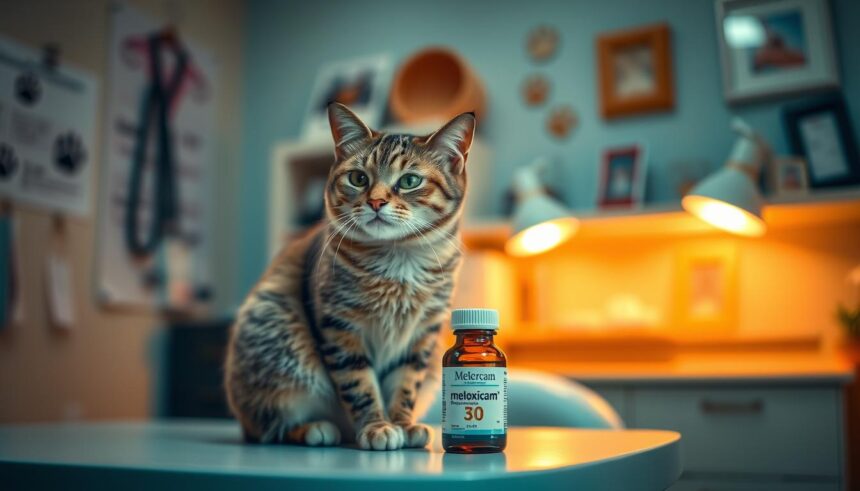








































































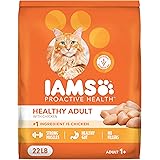





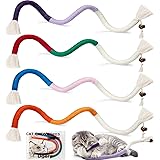











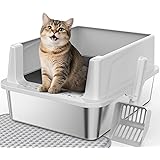

















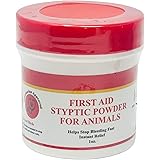











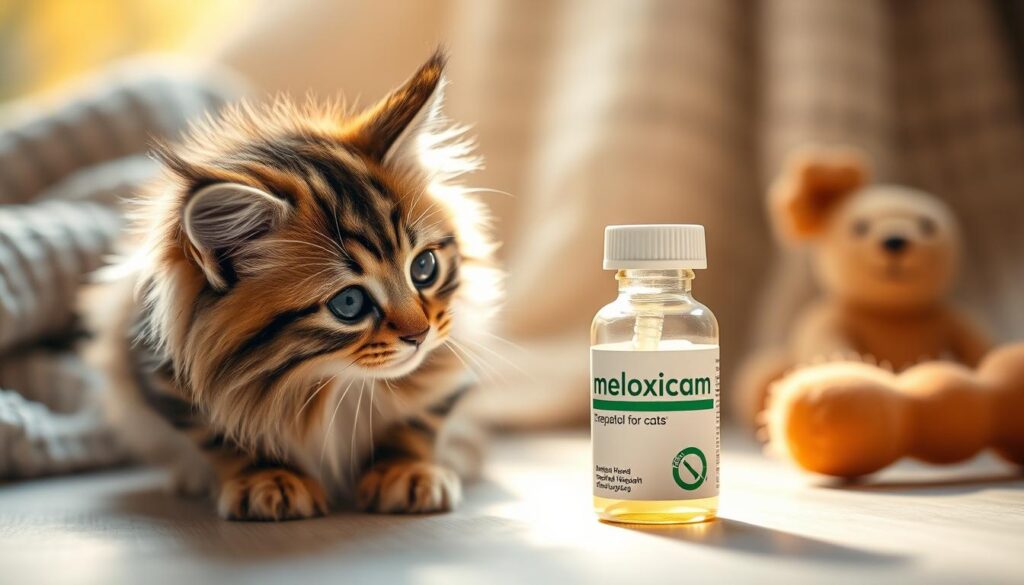



























![Qraxond Interactive Cat Toys for Indoor Cats,[Newly Upgraded] Rechargeable Touch Activated Hide and Seek Kitten Toys for Bored Indoor Adult Cats with Fluttering (Blue) #1](https://m.media-amazon.com/images/I/51u7hRHNFVL._SL100_.jpg)
![Qraxond Interactive Cat Toys for Indoor Cats,[Newly Upgraded] Rechargeable Touch Activated Hide and Seek Kitten Toys for Bored Indoor Adult Cats with Fluttering (Blue) #2](https://m.media-amazon.com/images/I/51ohmOBM9EL._SL100_.jpg)
![Qraxond Interactive Cat Toys for Indoor Cats,[Newly Upgraded] Rechargeable Touch Activated Hide and Seek Kitten Toys for Bored Indoor Adult Cats with Fluttering (Blue) #3](https://m.media-amazon.com/images/I/51ie+jzh6OL._SL100_.jpg)
![Qraxond Interactive Cat Toys for Indoor Cats,[Newly Upgraded] Rechargeable Touch Activated Hide and Seek Kitten Toys for Bored Indoor Adult Cats with Fluttering (Blue) #4](https://m.media-amazon.com/images/I/51fwHDC-vtL._SL100_.jpg)
![Qraxond Interactive Cat Toys for Indoor Cats,[Newly Upgraded] Rechargeable Touch Activated Hide and Seek Kitten Toys for Bored Indoor Adult Cats with Fluttering (Blue) #5](https://m.media-amazon.com/images/I/51E9X9uD8TL._SL100_.jpg)






















